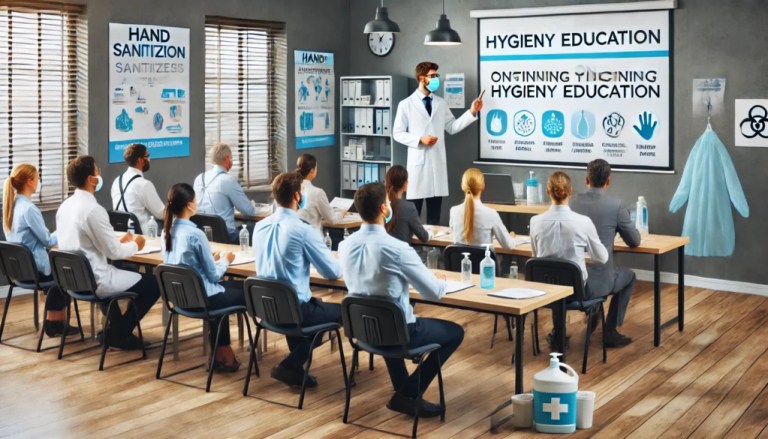
More and more businesses are looking to adopt sustainable practices to meet consumer expectations and contribute to environmental protection. Using eco-friendly cleaning products for disinfection is an important step in this direction. This article explores the benefits these products offer to businesses, going beyond mere environmental responsibility.
What is an Eco-Friendly Cleaning Product?
- Natural Ingredients: Formulated from biodegradable and non-toxic components.
- Sustainable Production: Manufactured with environmentally friendly methods.
- Recyclable Packaging: Use of recycled or recyclable materials for containers.
- Recognized Labels: Certified by organizations such as Ecologo, European Ecolabel, or Ecocert.
Health Benefits
- For Employees:
- Reduced Irritations: Lower risk of allergies, skin, or respiratory irritations.
- Healthier Work Environment: Improved indoor air quality.
- Less Absenteeism: Decrease in illnesses related to chemical exposure.
- For Customers:
- Increased Comfort: More pleasant atmosphere without strong chemical odors.
- Safety: Lower risk for sensitive or allergic clients.
Environmental Benefits
- Biodegradability: Products break down without harming the ecosystem.
- Pollution Reduction: Less release of harmful substances into water and soil.
- Resource Economy: Less energy and raw materials used in production.
Economic Benefits
- Long-Term Costs:
- Durability of Equipment: Less corrosive, they preserve surfaces and machinery.
- Waste Reduction: Recyclable packaging reduces waste management costs.
- Efficiency: Concentrated products require less quantity for the same result.
- Customer Attraction:
- Positive Image: Enhanced reputation as a responsible business.
- Differentiation: Stand out from the competition by adopting sustainable practices.
- Loyalty: Eco-conscious customers prefer engaged businesses.
- Regulatory Compliance:
- Law Anticipation: Comply with increasingly strict environmental regulations.
- Avoid Penalties: Reduce the risk of fines related to harmful product use.
Implementation in the Company
- Product Selection:
- Look for Labels: Choose certified eco-friendly products.
- Compare Efficiency: Ensure products meet cleaning needs.
- Test Products: Conduct trials to check compatibility with surfaces and equipment.
- Staff Training:
- Awareness: Explain the benefits of eco-friendly products.
- Usage Instructions: Train on specific dosages and methods.
- Encouragement: Involve staff in the ecological approach.
- Communication:
- Inform Customers: Highlight the company’s ecological commitment.
- Transparency: Share efforts and results achieved.
Including Disinfection
- Eco-Friendly Disinfectants: Use disinfectants that are both effective and environmentally friendly.
- Disinfection Protocols: Implement standard protocols that align with sustainable practices.
- Educate Staff: Train employees on the use of eco-friendly disinfectants and their benefits.
Conclusion
Adopting eco-friendly cleaning products offers multiple benefits for businesses. Beyond environmental protection, it is a step that promotes employee health, enhances brand image, and can even generate long-term savings. By integrating eco-friendly disinfectants into cleaning protocols, businesses can ensure both a clean and sustainable environment.




























































